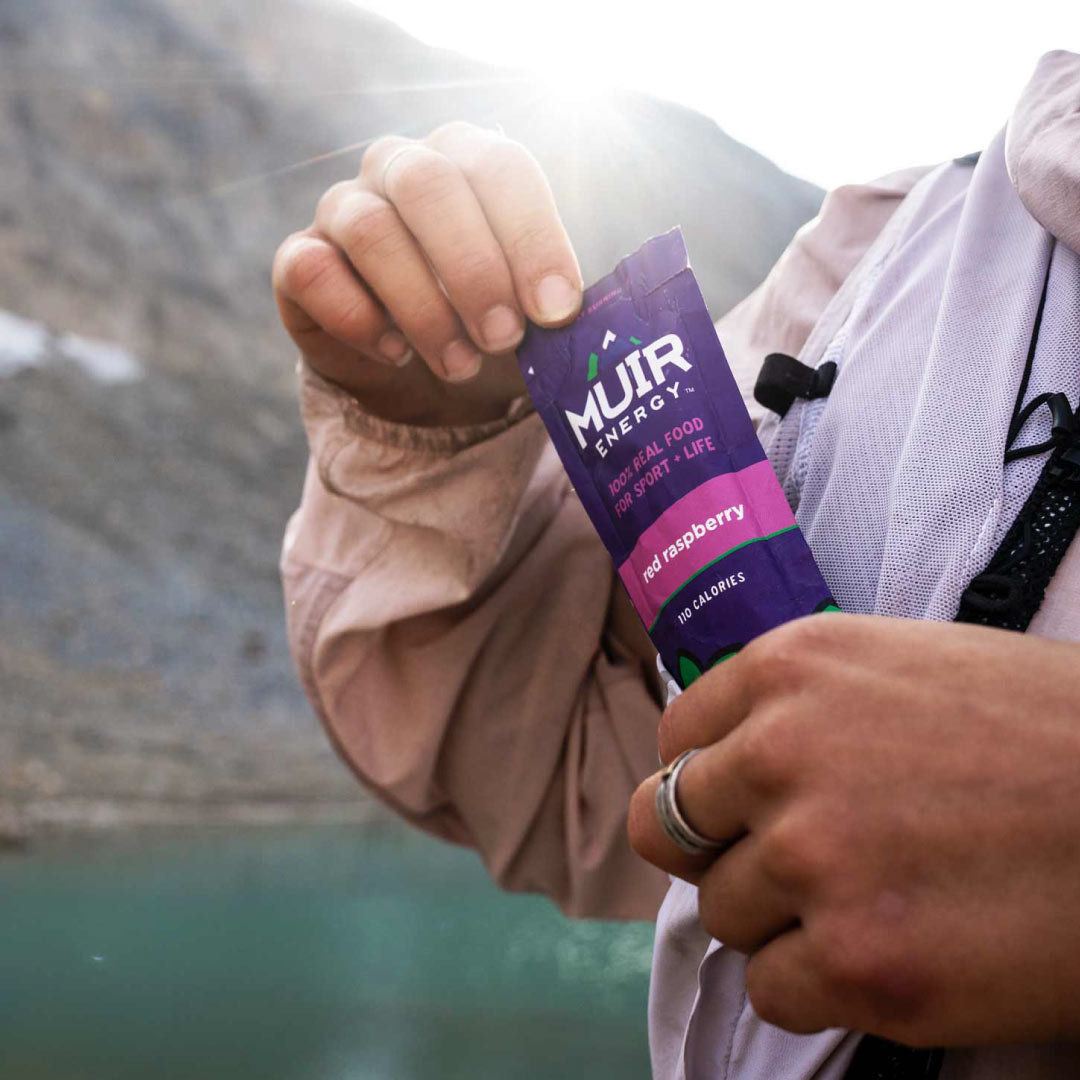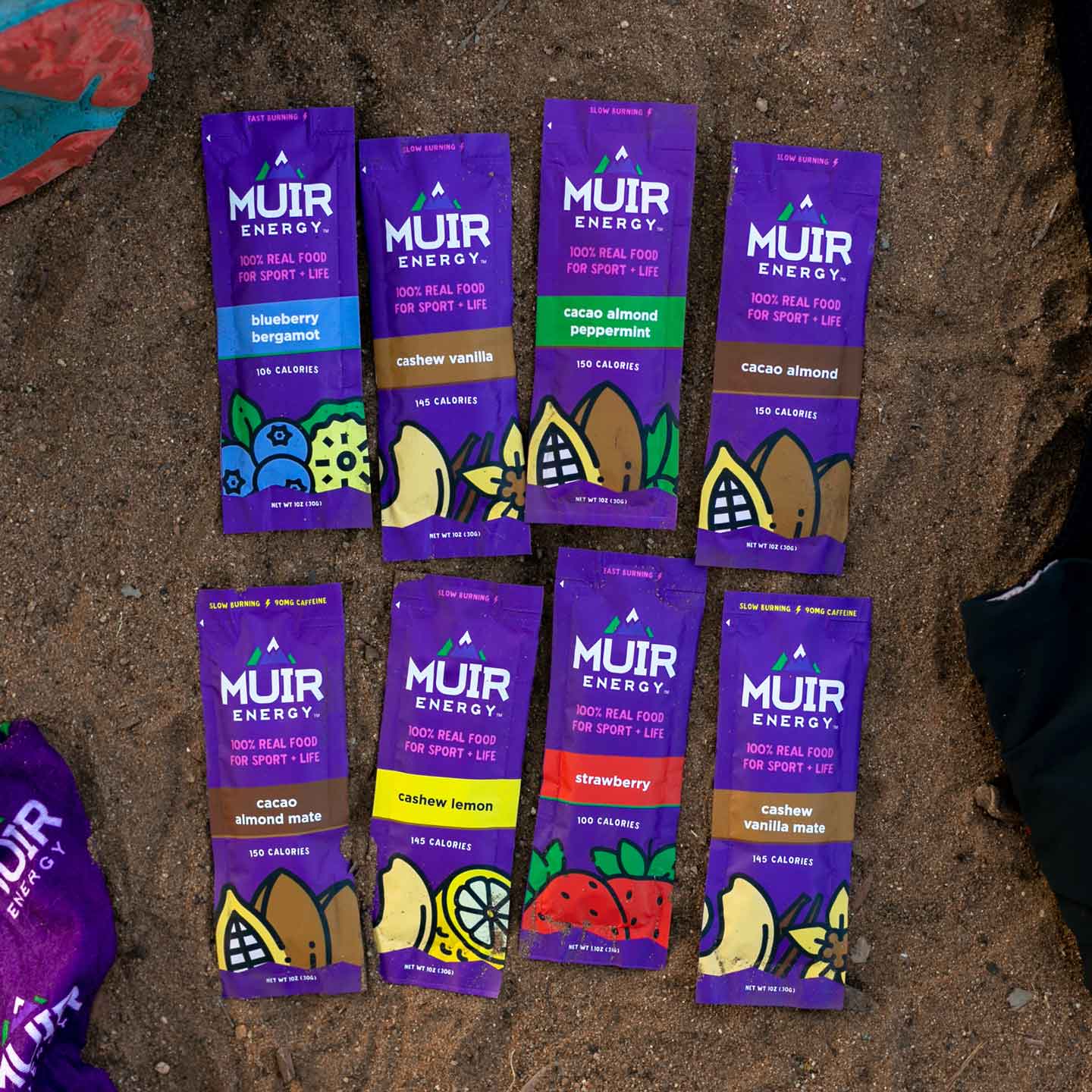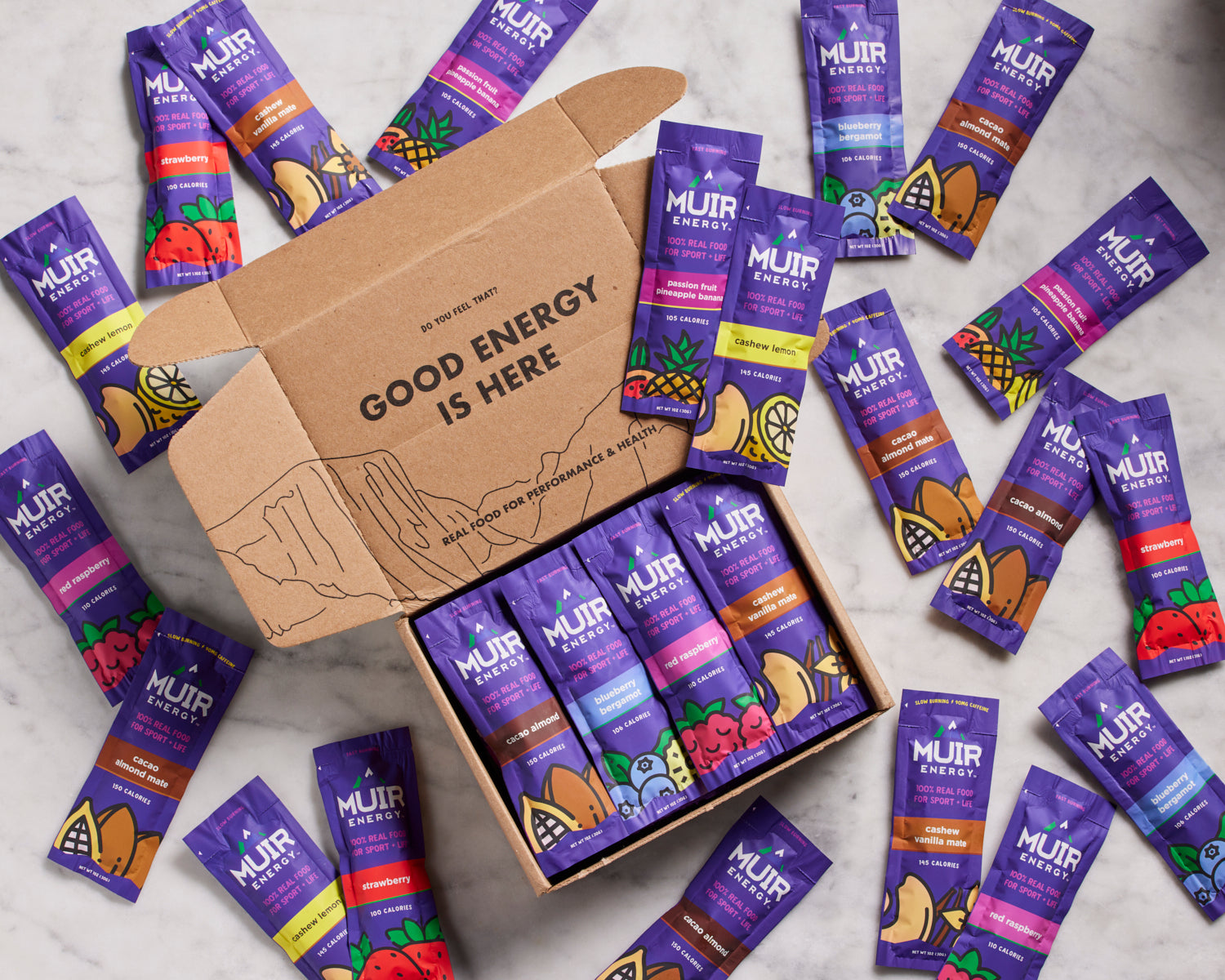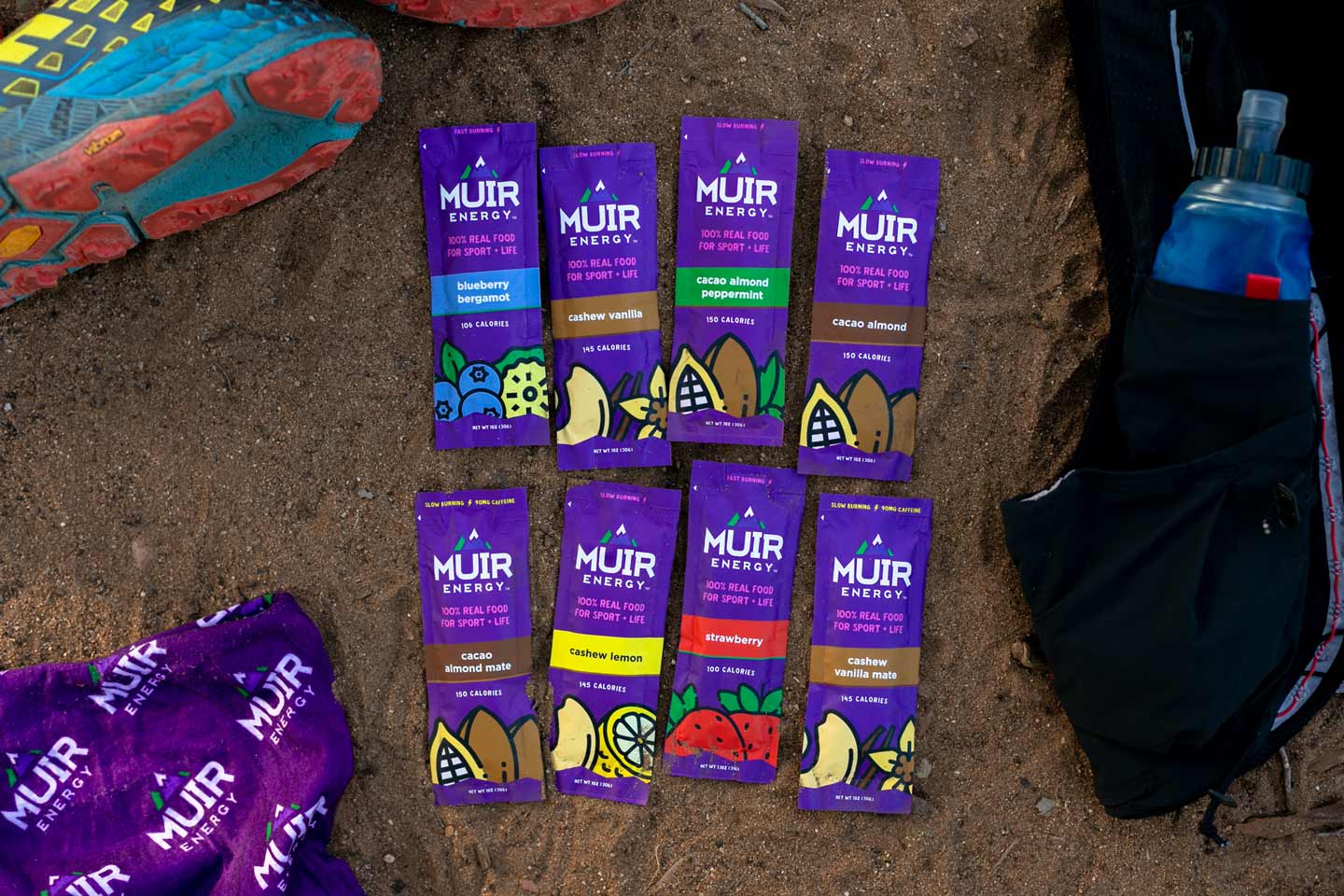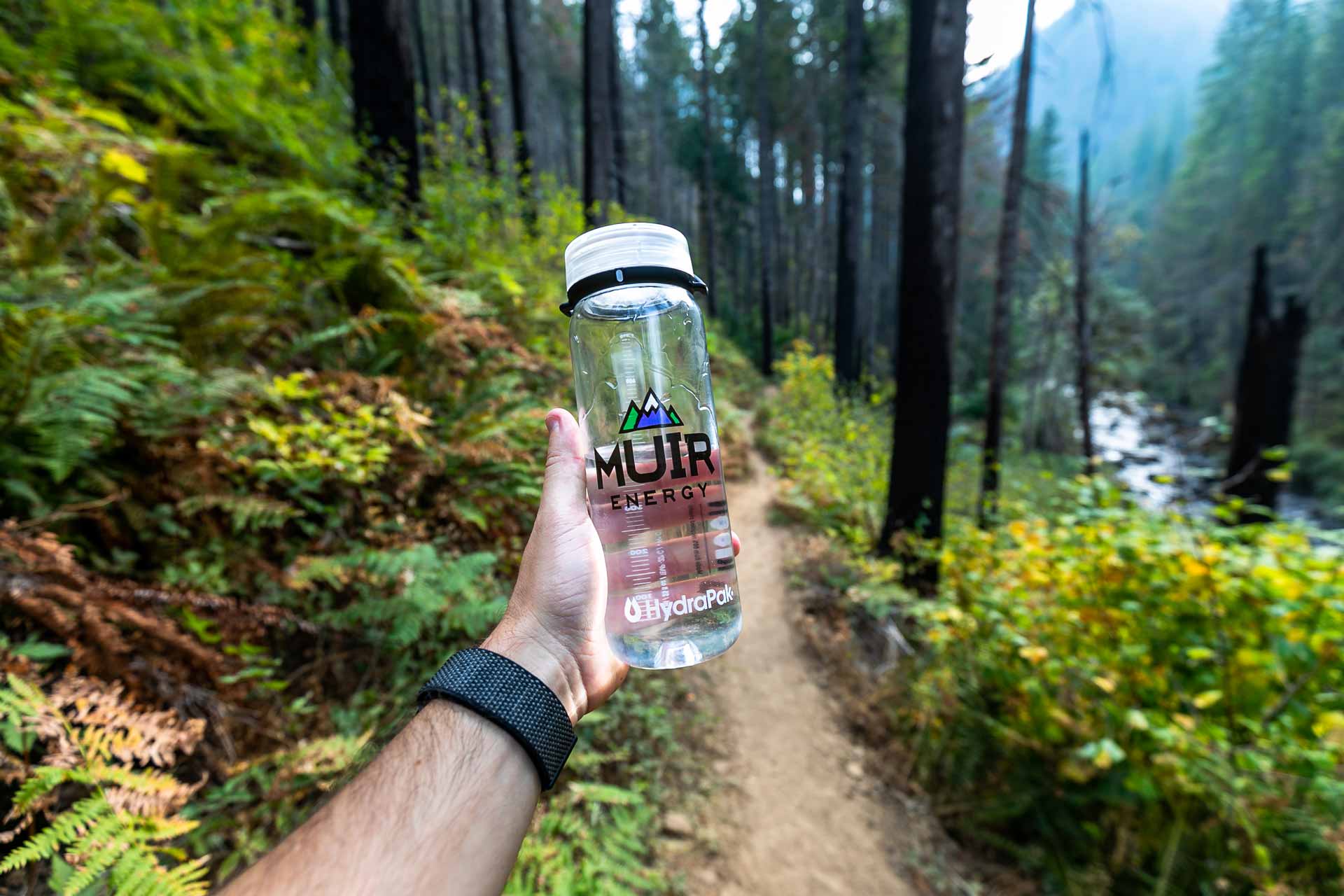By Georgia Danielson, MUIR Editor
Are you sick of using over sweetened, over-engineered energy products to fuel your workouts, race, and adventures? Maybe you’re thinking that fueling with candy might not be helping you feel as good as possible on your adventures. Perhaps you’re just looking to incorporate your clean eating habits in your training nutrition.
When you transition to using real foods on your training runs, races, and adventures, not only do you not have to compromise the enjoyment of the run or your performance, but over time you should be able to run longer and stronger on real foods.
Check out the 7 benefits of running on real foods, and the 6 tips to be aware of to make your transition as smooth as possible.
The 7 Benefits of Running on Real Foods
1. Real food metabolizes steadily
The nutrients in real foods exist in various forms and as a part of a matrix with other nutrients and water. This is important for three reasons: 1) it affects the bioavailability of nutrients, 2) it affects the rate of nutrient release into your bloodstream, and 3) it affects equilibriums in your body like blood pH, water uptake, etc.
The primary performance benefit of nutrients existing in a complex matrix in real food is the steady rate of release of energy into your bloodstream. You’ll experience a much steadier release of energy with real foods.
2. Real food calories go farther than isolated, empty calories
When we look to fuel our adventures, we focus on the energy-supplying macro-nutrients: carbohydrates, fat, and protein. When we focus exclusively on the amount of energy a food has, it can sometimes lead to food choices with empty calories. Empty calories aren’t necessarily bad to fuel a workout, but real food can be better.
It’s very common for runners, athletes, and adventure seekers to report needing less fuel, even when the calorie count is the same, when they fuel with real food rather than sugar-based or sodium-based synthetic products. This means you can go farther, feeling better using real food.
3. Real food won’t fatigue your pallet the same way
Because real foods are complex in flavor and texture, your pallet won’t fatigue as quickly as it might with synthetic gels, sports drinks, or candy.
Especially when you are training and completing multi-hour efforts, making sure you keep your pallet happy can make your break your training, race, or adventure.
4. Real food is more satiating
Because real foods are complex, release steadily into your bloodstream, and are often denser than synthetic performance foods, they satiate your stomach more than synthetic performance foods and candy. This means fueling with real foods will keep you from feeling hungry again just a few minutes after you eat.
5. Real food can have a (very) positive effect on your recovery
Runners, hikers, cyclers, and adventurers often report faster, easier recovery when they fuel with real food. This is likely because real foods are much more nutritionally dense than synthetic performance products. So, you get the benefits of the performance-specific nutrients like calories, electrolytes, and stimulants, but you also get the dense benefits of all the micronutrients, trace minerals, and antioxidants from real foods that are already helping to repair your muscle tissues as soon as you stop breaking them down by working out.
6. Real food is usually cheaper
Besides being questionable choices for your body, synthetic sport-specific endurance fuel can be expensive, especially when you realize you need a lot of them to sustain you over just one race, adventure, or to train with. In contrast, real foods are often much cheaper. This is often a huge reason why adventurers choose to fuel primarily with real foods.
7. It’s easier to uphold all of your food ethics when you choose real food to fuel with
Now more than ever, people are concerned with how their food choices impact the environment, social structures, and fair labor practices, besides the health of their bodies and their loved ones. Ironically, though, well-meaning decisions go out the window when it comes to working out, where performance takes precedence over ethics and whole body health.
When you transition to eating real foods on the run, it becomes a lot easier to uphold your beliefs about what you eat. The misnomer is that in order to fuel with real foods, you’ll sacrifice performance. This is NOT TRUE. Your gut handles what you train on, and it may take some adjusting to real foods rather than synthetic performance products but it does not have to come at a performance compromise.
Real food works with your body differently and not all real foods are ideal for running. You’ll need to pay attention to how it’s different. Here’s what you need to be aware of so you can make a smooth transition.
The 6 Tips to Be Aware of When Transitioning to Real Food
1. Real food has fiber, so pay attention to food labels
A little bit of fiber can help steady the release of energy into your bloodstream, but too much can cause gut distress and send you to the bathroom a few more times than you’d like. To avoid too much fiber, pay attention to food labels, and if it’s a whole food, take the time to find the fiber content online. For example, sweet potatoes are a great real food to run on, but you want to stay away from the peel because of how much fiber it adds. Broccoli and carrots, on the other hand, are very rich in micronutrients, but they’re also very high in fiber and low in calories, making them less than ideal real foods to use for endurance fueling.
2. Real food means chewing, and that’s a good thing
Besides making bulky foods smooth, chewing actually signals to your stomach and the rest of your GI tract that food is on the way and it should start preparing for digestion. This means more efficient digestion, a happier gut, and a smoother training experience, race, or adventure.
It might take a moment for you to get used to chewing more while running. Bringing easily accessible water or electrolyte drink can help as well.
3. Real food takes more time to digest
As mentioned before, real foods are more complex and satiating. While this is an overall benefit to your energy levels, you should be aware that you may not notice a boost in energy as immediately as a sugar-based endurance food product.
4. Real foods may take some preparation
Fueling with real foods often means some form of prep at home. Sweet potatoes need to be cooked, cooled, and packaged before taking them on a run. A PB&J needs to be prepared, and all the ingredients need to be purchased separately. One of the benefits of MUIR Energy is the convenience: you get all the benefits of real food without spending time on preparation.
5. Real foods are not often packed conveniently
With some exceptions like MUIR Energy real food energy gels, real foods aren’t always packaged conveniently for running or adventures. So, you should consider how to portion real foods, how resistant they are to getting smashed during an adventure, and how well they’ll do in heat or cold. We recommend dividing food up by a rough calorie count around 100-300 calories per portion, put in a reusable food pouch, and pop into your vest. For example, cut a peanut butter and real fruit jelly sandwich in half and place each half in a food pouch. Ask yourself if you’re alright with eating a smashed PB&J, and if you aren’t, then store it carefully towards the top of your running pack.
6. Real foods are denser, and it can take time to for your stomach to adjust
Because real foods are denser, you should give your stomach time over a series of runs to get used to running with more physical weight in it than if you were running off liquids or synthetic performance food products exclusively.
Often, runners won’t use real foods because they don’t give their body time to adjust to running with more dense foods and experience GI stress. The key here is to allow enough time to allow your body to get used to running with food in your stomach. This should be done over a series of runs, not a single run. There are so many benefits to running on real food that it is absolutely worth the effort to transition.
Final Thoughts
Whether you’re looking to fuel better, cheaper, healthier, or more environmentally conscious, real food offers many advantages over synthetic performance products. By heading this advice, you can make a smooth transition that’s good for your body, good for the planet, and good for your performance.

